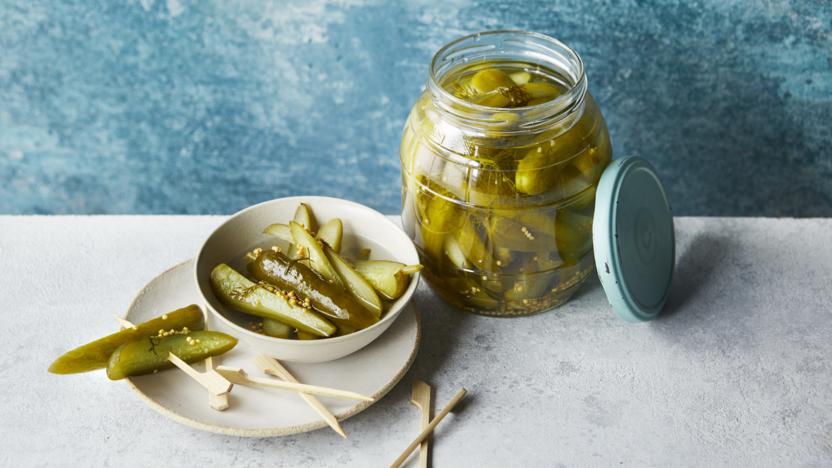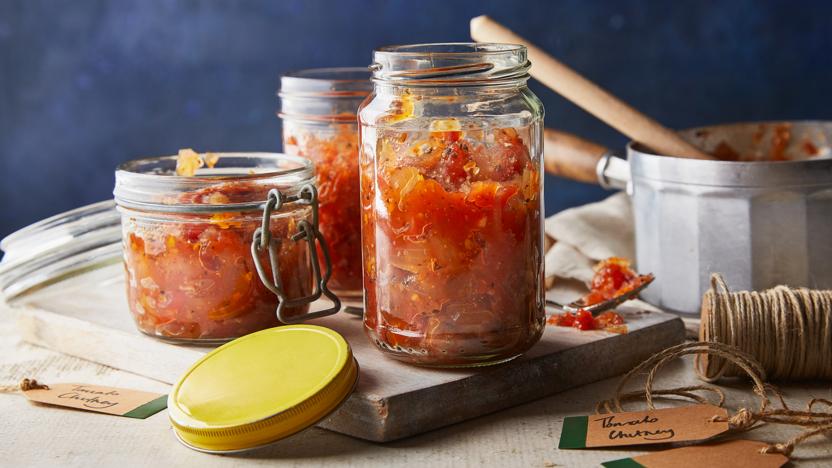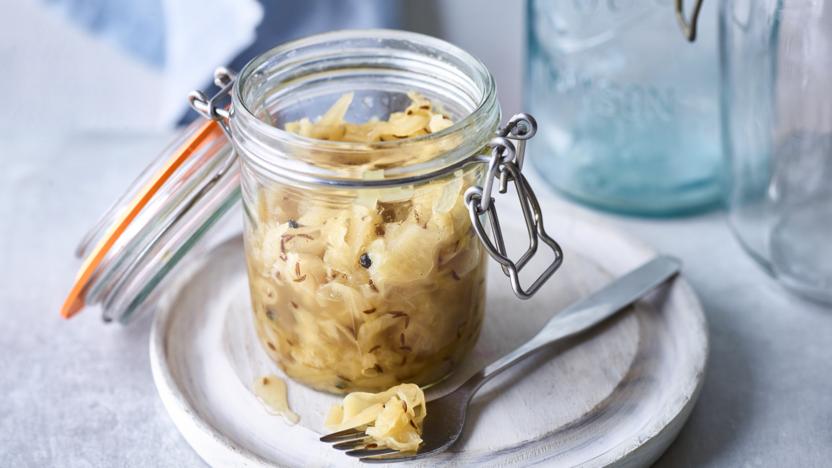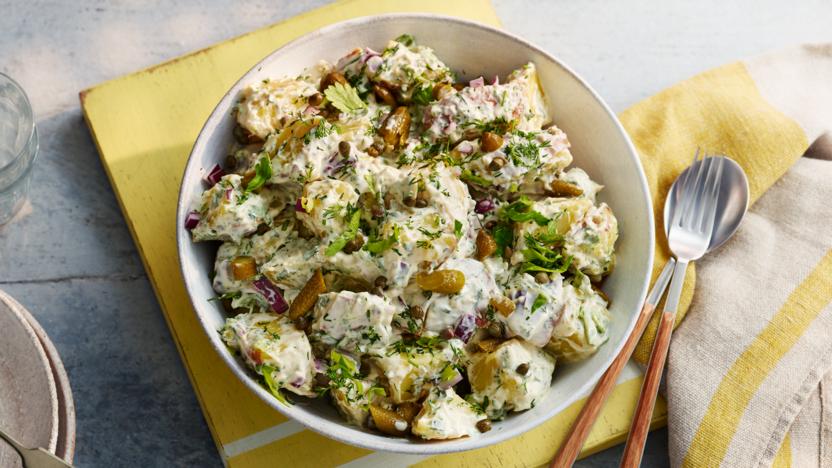Dill pickles

More often than not dill pickles have a dill flower in the jar; mostly for the addition of dill’s soothing aniseed flavour, but they do make the jars look pretty too. Dill flowers are best harvested just as they finish flowering and when the tear-shaped green seeds are beginning to set. If you can’t get any dill flowers, then a few dill fronds can be used instead. A true dill cucumber is between the size of a gherkin and a small cucumber, but if you can’t get hold of any, you can use gherkins or small immature cucumbers instead.
You will need two 500–600ml/18–20fl oz sterilised jars. See the Recipe Tips for information on how to sterilise jars.
Ingredients
- 1kg/2lb 4oz gherkins, or small cucumbers (approx. 15cm/6in long)
- 50g/1¾oz sea salt
- 2 dill flower heads, or few dill fronds
- 2 tsp dill seeds
- 2 tsp mustard seeds
- 2 garlic cloves, peeled
- 600ml/20fl oz cider or white wine vinegar
- 100g/3½oz granulated sugar
Method
Wash the gherkins or cucumbers. Leave gherkins whole, but if using cucumbers, cut in half lengthways and remove any seeds by running a teaspoon down the length of each half. Cut each half into 3–4 slices lengthwise, then cut the lengths in half on the diagonal so you end up with spear-shaped pieces about 6–7cm/2½–2¾in long.
Place in a shallow dish, sprinkle with the salt lightly and toss to distribute the salt. Cover the surface with baking paper and weigh it down with a plate. Leave in a cool place for 12–24 hours.
Tip into a colander and rinse the gherkins or cucumbers under cold water. Drain well, tossing to encourage any excess water to drain away. Leave for 5–10 minutes to dry.
Place a dill head (or fronds) into each sterilised jar. Add a teaspoon of dill and mustard seeds and a garlic clove to each jar.
Put the vinegar, 200ml/7fl oz water and the sugar in a large saucepan. Heat gently, stirring all the time, until the sugar has dissolved. Add the gherkins or cucumber and simmer for 5–6 minutes for gherkins, or 3–4 minutes for cucumber spears (the skins of both will turn an olive green and the cucumber flesh slightly translucent). Remove from the heat.
Pack the gherkins or cucumber spears into the prepared jars as snugly as you can. Return the remaining liquid to the heat and bring to the boil. Pour into the jars, making sure the liquor completely covers the contents. Screw the lid tightly and invert the jar for a minute or so, to ensure the lids are sterilised, then turn the right way up and leave to cool.
Recipe Tips
The salt draws out the excess moisture from the vegetables, which will help keep them crisp, intensify their flavour and improve their preservation by preventing the excess water diluting the vinegar.
Prepare your jars and lids shortly before you need them. You can do this by putting them through a hot (60C) dishwasher cycle shortly before you need them (don’t try to dry them with a tea towel, let them air dry) or wash them in hot water then place in an oven preheated to 140C/120C Fan/Gas 1 for 15 minutes (switch off the oven and leave the jars inside until needed). Alternatively, place the jars in a large stock pot with a clean folded cloth or trivet placed on the base, cover the jars completely with cold water and bring to simmering point (90C) for 10 minutes, next remove the pan from the heat and leave the jars in the hot water until you need them. When your preserve is ready, carefully remove the jars from the pan, tipping out the water as you do so – a pair of bottling tongs makes this job easy, but otherwise use ordinary tongs.


